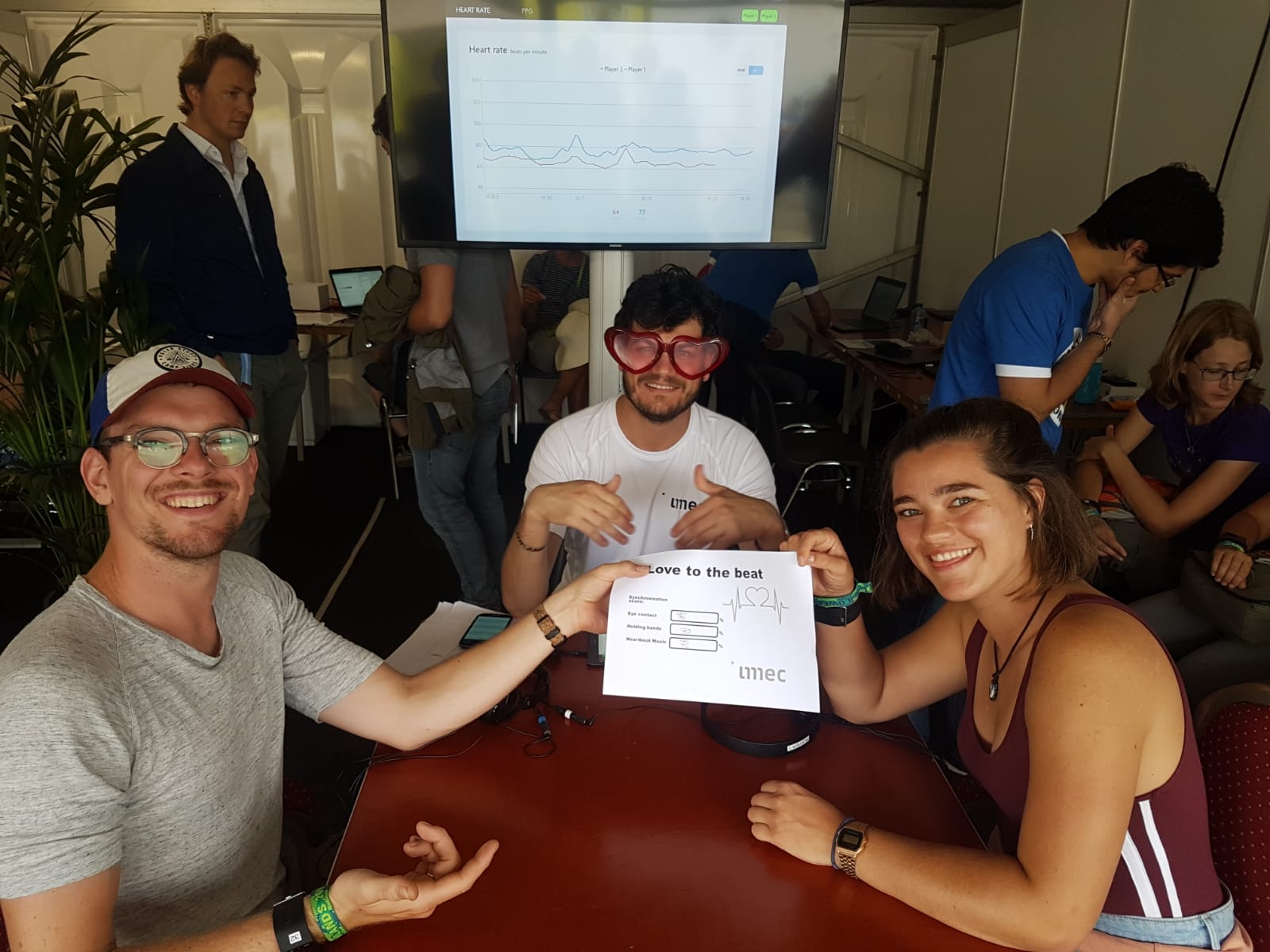
UPDATE: video material
While a lot of music festivals are embracing science and technology, at Lowlands this weekend, you can even participate in fundamental scientific research. During the festival, Imec Nederland will do research into a new test method to determine the alcohol percentage in your blood and into whether and how people can physically synchronise. In addition, the research institute, in collaboration with Rabobank, is showing what the greenhouse of the future will look like.
Who is the designated driver?
With glasses that measure the movement of your eyes, imec wants to be able to determine the percentage of alcohol in your blood, and in order to collect as much test data as possible, the research institute does so on Lowlands. Eline van Uden, communication specialist at imec Nederland: “We get the opportunity to collect a lot of data because there are a lot of visitors, and we test a new non-invasive method to be able to measure your blood alcohol level as accurately and reliably as a blood test. For that, we need a lot of data. Lowlands is a very suitable place for that. The participants in the research get a breathalyzer test and the diehards can even have their blood taken. We then compare the results of the tests.” The research should lead to new applications of the technology, “Think of monitoring people with alcohol problems or an accurate test for the police”, according to Van Uden.
(more text below the video)
Love to the beat
The second study that visitors to Lowlands can take part in is about synchronisation. Research shows that people are able to synchronize physically with each other. To find out how this works, imec is going to do research. With a stress meter, multiple body functions of participants are measured, both in couples and in strangers. “This is a relatively new scientific field, about which little is known. With this research we are going to see if people react differently to each other’s heartbeats when they actually hold each other’s hands, close their eyes and hear the other’s heartbeat through headphones. Do their heartbeats converge, does one adapt to the other, if so, who is dominant in it?”
(more text below the video)
The greenhouse of the future
In addition to these two experiments, imec also has the ‘Grow Smart 2050’ pavilion on Lowlands. The technology shown here is based on data from existing high-tech horticultural greenhouses in the, by Interreg financed, research project Grow! With the glasshouse of the future, imec, in collaboration with Rabobank, want to make people aware of how technology can contribute to making food production more sustainable.
Rene Elfrink of imec Netherlands says more about the technology: “We can already place a sensor in a cost-efficient way on every plant that measures the microclimate of the plant. The sensor technology allows us to detect deviations at an early stage that may indicate a disease or fungus. This enables the grower to intervene sooner, which significantly reduces the use of pesticides and ultimately makes them superfluous. Our ion sensor measures water quality while the co2 sensors measure the air quality of the greenhouse for optimal climate control. By showing this in a vertical installation, visitors get a good idea of the possibilities that already exist. We will, of course, also be there ourselves to give more information.”

